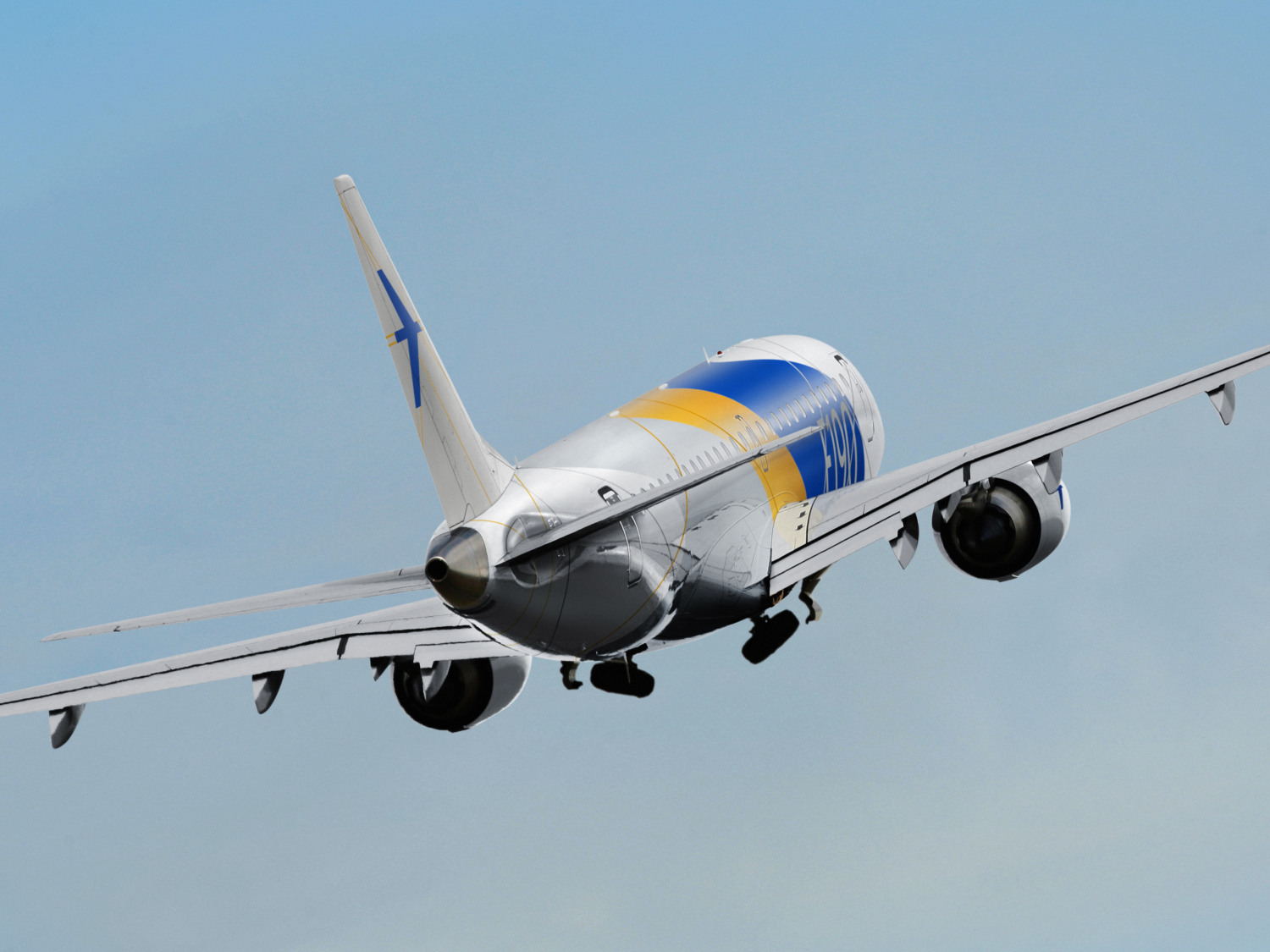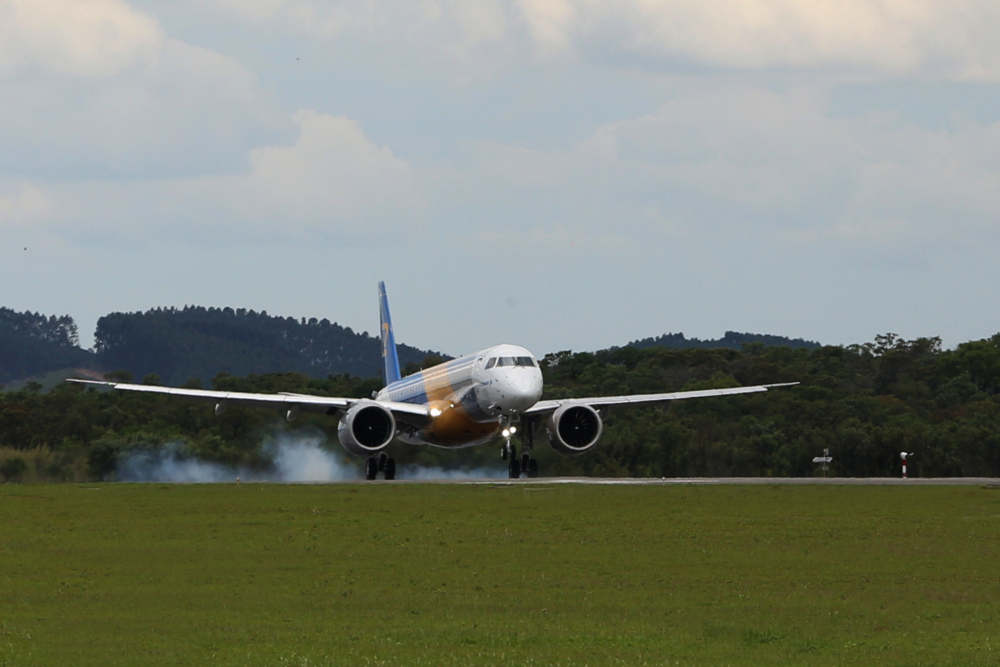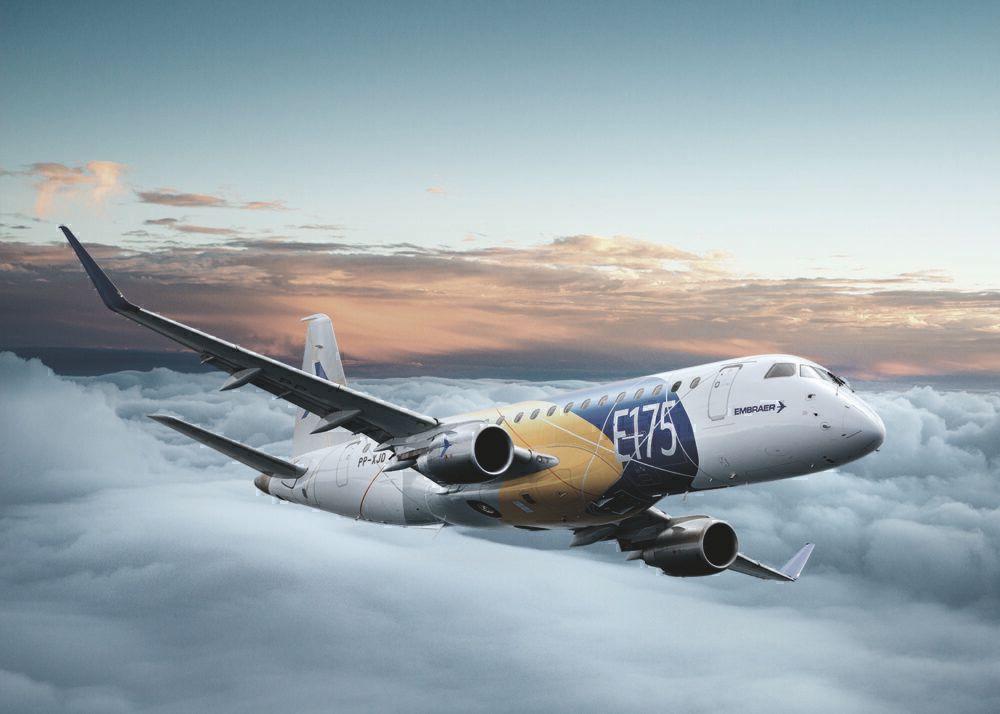As the first COVID-19 vaccines get rolled out in certain countries, Brazilian aircraft manufacturer Embraer has released technical guidance to help Embraer customers safely transport the vaccine. Embraer says their planes can carry over 100,000 doses of the vaccine. However, they need to be carried at temperatures as low as -70°C using dry ice. Embraer wants to help its customers to do this safely and efficiently.
“Since the pandemic began, Embraer’s main concern has always been the health of its employees and partners, as well as contributing to society to overcome the impacts of the crisis," says Embraer CEO, Francisco Gomes Neto in a press release seen by Simple Flying.
Embraer expects customers to use its planes to transport COVID-19 vaccines
This Christmas, Embraer has around 2,500 planes in the air worldwide. They range from the EMB120 Brasilia to the ERJ 145, the E-Jets, and the E-Jets E2 families of commercial aircraft. Embraer's technical guidance is designed to help its customers properly define the transportation characteristics and payload requirements for COVID-19 vaccines. Embraer expects many of its 100 plus customers to use their planes to help move the vaccine.
"This technical disposition allows us to guide our customers, supporting each airline using Embraer’s products to transport the vaccines that will benefit the entire world in the fight against the virus," the Embraer CEO added in the release.
Embraer joins several aircraft manufacturers and safety regulators who have all put together guidelines for safely transporting the COVID-19 vaccine. Most airlines are well versed in carrying time-sensitive cargo under certain environmental conditions. Some airlines have even done practice runs, drilling their crews, and ironing out the kinks.
Managing CO2 levels from dry ice is critical
The key issues at play when safely transporting COVID-19 vaccines appear to be managing aircraft ventilation, making sure the CO2 detectors are working perfectly, and balancing the need to monitor the cargo with the need to have the least amount of people as possible on the plane.
In terms of ventilation, the standard procedure is to follow the recommendations of aircraft manufacturers like Embraer. COVID-19 vaccines are transported using dry ice. As dry ice melts, it turns into carbon dioxide gas, or CO2. If concentrations of CO2 get high enough, it can lead to unconsciousness or even death - not something you want to see.
Standard operating procedures covering the carriage of dry ice under normal and failure cases need to be considered. To mitigate the risk of higher concentrations of CO2 (above 0.5%), it is usually recommended that the aircraft ventilation and pressurization system are fully operational at all times. Moreover, the CO2 detectors on the plane should be fully operational at all times.
A balance between watching the cargo and keeping people safe in-flight
Ideally, vaccines should be transported on the lower deck of a plane. That's not always going to happen, particularly on smaller aircraft like Embraers. But if ventilation and CO2 detection issues are appropriately looked after, the risks of carrying COVID-19 are mitigated. Having some personnel on the flight to keep an eye on things is also recommended by authorities.
Managing CO2 levels is the biggest challenge for airlines when transporting COVID-19 vaccines. The pilots need to safeguard against carbon dioxide incapacitation or intoxication. It is recommended that some personnel are onboard in the cabin to keep an eye on the cargo. But it should be the least amount of people possible. Airline employees must be trained and aware of potential CO2 intoxication. It's a balancing act for the Embraer operators - the vaccines need to be looked after, but by as few people as possible.
Like other aircraft manufacturers and safety regulators, Embraer knows it is safe to fly the COVID-19 vaccine. But the process does need to be managed properly. And while you might not hear much about it, airlines fly far more dangerous substances under far more hazardous conditions every day of the year. It's a part of everyday business for the airlines.
What are your thoughts about transporting the vaccine? Let us know what you think in the comment section.



